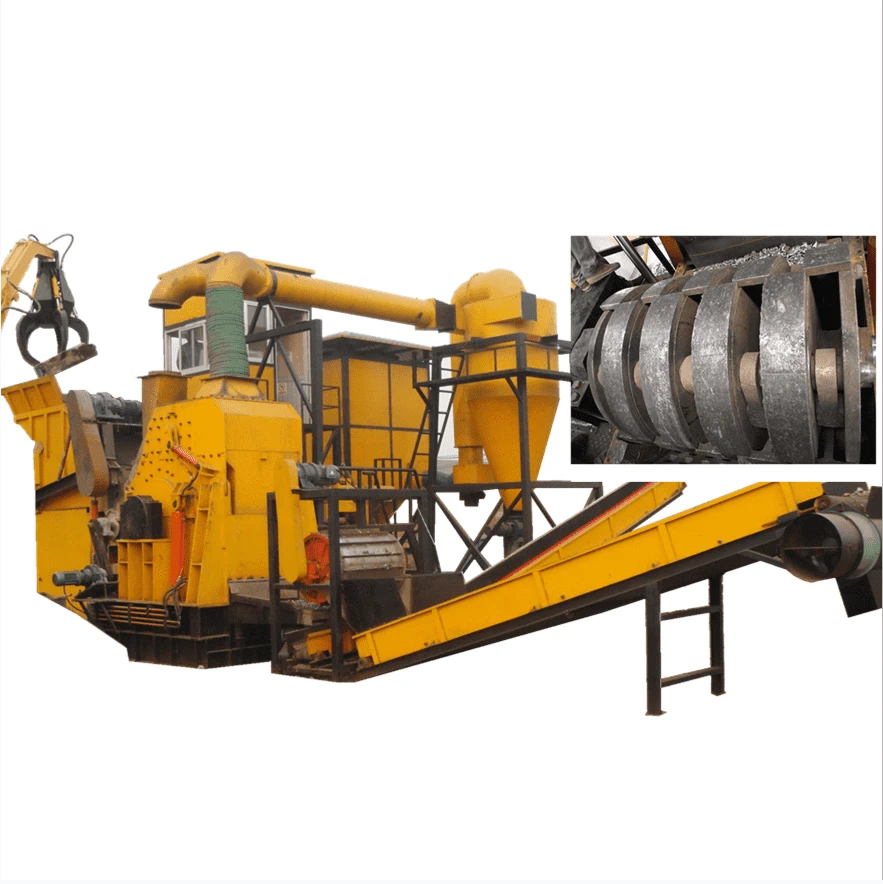

វិច្ឆិកា . 20, 2024 23:11 Back to list
The Importance of Steel Recycling Plants in Sustainable Development
In an era marked by growing environmental concerns and the urgent need for sustainable practices, steel recycling plants play a crucial role in the circular economy. As one of the most recycled materials globally, steel not only contributes significantly to manufacturing but also embodies an opportunity for waste reduction and resource conservation. This article explores the essential functions and benefits of steel recycling plants, emphasizing their importance in promoting sustainability.
Steel is an incredibly versatile material widely used in construction, automotive, appliances, and a variety of other industries. However, its production is energy-intensive, leading to substantial carbon dioxide emissions. The extraction of iron ore as well as the smelting process in blast furnaces requires a considerable amount of energy, primarily derived from fossil fuels. In contrast, steel recycling drastically reduces the energy required for production, making it a more environmentally friendly option.
Steel recycling plants serve as the backbone of the industry’s recycling efforts. These facilities collect scrap steel from various sources, including manufacturing waste, construction debris, and post-consumer products. Once collected, the scrap undergoes a meticulous sorting process where contaminants and non-ferrous materials are removed. Magnetic separation is a standard technique used to isolate steel from other materials, ensuring that the resulting product is of high quality.
After the sorting stage, the steel scrap is melted down in electric arc furnaces (EAFs) or induction furnaces. EAFs are particularly noteworthy as they require significantly lower energy input compared to traditional steel-making methods. The melting process also emits far fewer greenhouse gases, making steel recycling plants more aligned with global sustainability goals. In fact, recycling one ton of steel saves up to 1,400 kilograms of iron ore, 625 kilograms of coal, and 300 kilograms of limestone—a significant reduction in resource extraction.

The benefits of steel recycling plants extend beyond energy savings and reduced emissions. By reprocessing scrap steel, these facilities contribute to the conservation of natural resources, ensuring that metals remain in circulation rather than being discarded. This not only helps to alleviate the growing pressure on finite resources but also supports economic stability by creating jobs within the recycling industry. According to statistics, the steel recycling sector employs thousands of individuals, providing essential work in collection, sorting, processing, and logistics.
Moreover, steel recycling plants also promote the development of local economies. By sourcing scrap steel locally, these plants reduce the need for transportation, thus minimizing additional emissions. This localized approach fosters a sustainable model where communities engage in resource recovery, leading to increased awareness about the importance of recycling and the circular economy.
In addition to these environmental and economic benefits, steel recycling plants contribute to the creation of innovative recycling technologies. As demand for sustainable practices grows, the industry is continually evolving, incorporating advanced technologies such as automated sorting systems and better processing techniques to enhance efficiency and output quality. This innovation not only improves recycling rates but also sets the stage for a more resilient and adaptable manufacturing sector.
Another notable aspect of steel recycling is its significant role in reducing landfills. With steel being one of the most recycled materials, the effective operation of recycling plants ensures that millions of tons of scrap metal do not end up in landfills every year. By diverting waste from landfills, we not only conserve space but also mitigate the potential pollution and environmental hazards associated with waste disposal.
In conclusion, steel recycling plants are vital to fostering sustainability in modern industry. They not only lead to significant reductions in energy use and greenhouse gas emissions but also contribute to economic growth and the conservation of resources. As the world continues to grapple with environmental challenges, the role of steel recycling facilities cannot be overstated. By embracing recycling as an integral part of industrial processes, we can work collectively towards a more sustainable future, where materials are reused, resources are conserved, and the planet is protected for generations to come.
Latest news
Troubleshooting Common Eddy Separator Problems
NewsJul.04,2025
The Role of Metal Recycling Plants in Circular Economy
NewsJul.04,2025
The Impact of Recycling Line Pickers on Waste Management Costs
NewsJul.04,2025
Safety Features Every Metal Shredder Should Have
NewsJul.04,2025
How Industrial Shredders Improve Waste Management Systems
NewsJul.04,2025
How Cable Granulators Contribute to Sustainable Recycling
NewsJul.04,2025